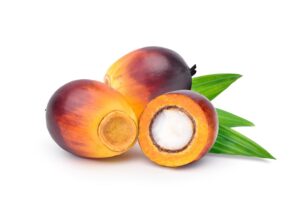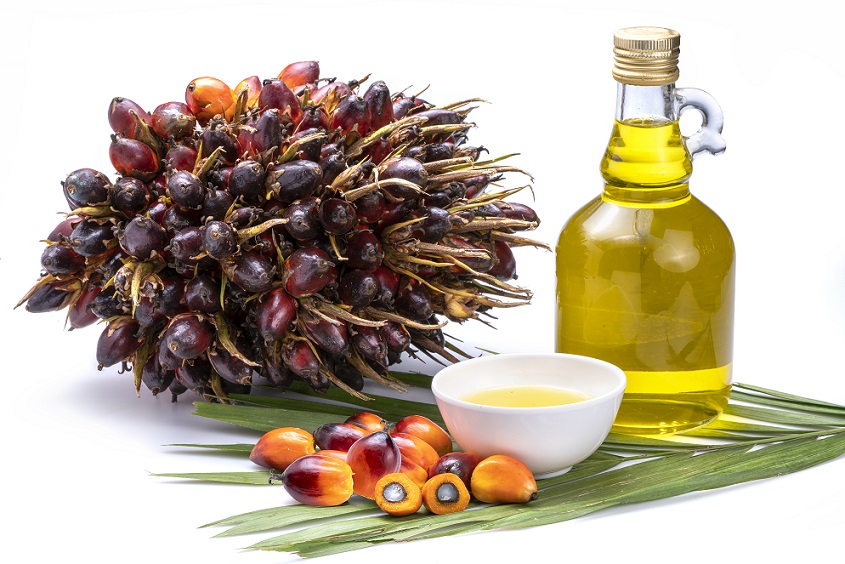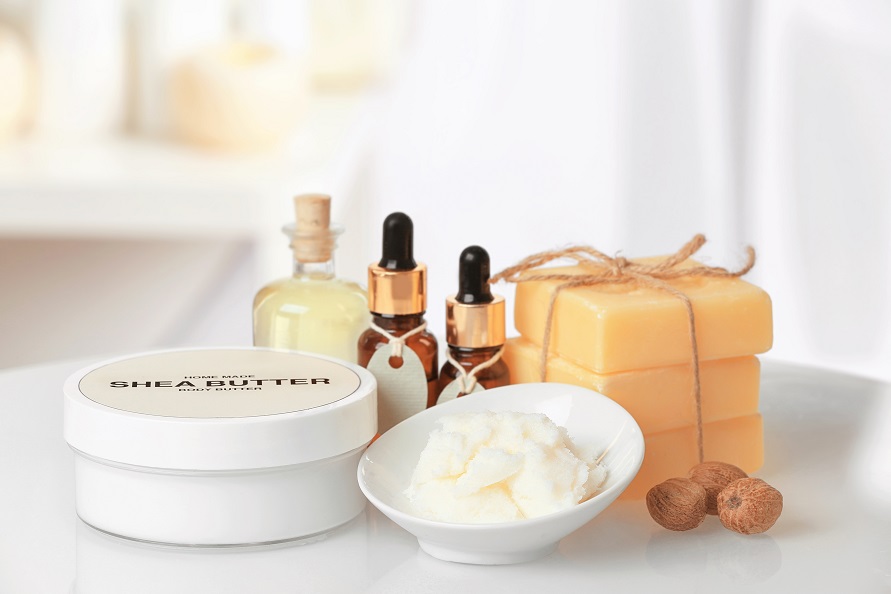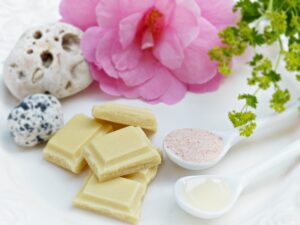Palm Free Soaps:
Yes, it may be possible to turn just about any soap recipe, to palm free soaps. This is a common question for consumers wanting homemade soap.
Many consumers, not only want vegan soap, but also wish to have palm-free based recipes. Oftentimes, due to sustainability issues surrounding palm and palm kernel oil. You can read more about ethical and environmental issues with palm oil here on our blog!

Here at RN to Zen, we do in fact use sustainable organic palm oil. Which means we only buy our palm oil from companies who comply with sustainability guidelines for sourcing palm oil and support sustainable production.
Having said that, some consumers want entirely palm-free cold process soap recipes regardless. This is totally understandable.
Truth is, palm oil is amazing in soaps. Palm oil adds hardness, and lathering properties when paired with oils like coconut oil, that no other alternative oil can really obtain.
However, in cold process soap making we have tremendous ability to create, and ultimately decide what goes into each batch of soap. Soapers can still produce some pretty remarkable end results using substitution base oils or alternatives to palm!
So today, we’re going to talk about some palm-free soap alternative oils/butters, and how to “replace” palm oil, in your recipes.
Brief Overview of Fatty Acids in Oils and/or Butters Used for CP Soap:
First off, don’t panic! This will make more sense as to why we bring this up!
- Lauric (Saturated fatty acid): Adds hardness, cleansing, and bubbly lather
- Myristic (Saturated fatty acid): Adds hardness, cleansing, and bubbly lather
- Palmitic (Saturated fatty acid): Adds hardness and creamy lather
- Stearic (Saturated fatty acid): Adds hardness and creamy lather
- Ricinoleic (Monounsaturated fatty acid): Adds conditioning, bubbly & creamy lather
- Oleic (Monounsaturated fatty acid): Adds conditioning
- Linoleic (Polyunsaturated fatty acid): Adds conditioning
These are the basic fatty acids that make up the oils and butters used in CP soap recipes. Understanding characteristics of them can help when formulating recipes.
Having just a basic understanding of these fatty acids in each of your ingredients, can help you achieve your desired end result.
What Are Some Properties of Palm Oil?

Before we begin discussing some alternatives, let’s talk palm oil and some of it’s properties in CP soap.
The most common types of palm in soaps are palm oil (refined), palm kernel oil, palm kernel flakes, and red palm oil. We’ll discuss palm oil as this is the most used of the 4 mentioned above in CP soaps!
Palm oil can be used up to 33% in soap recipes. Along with olive oil and coconut oil is one of the most used oils in soaps. Palm oil gives a bars of soap unique properties. It adds not only a fantastic hardness to the bar for longevity, but also adds a rich creamy lather that’s hard to find in substitute oils and/or butters.
Typical Palm Oil Fatty Acid Profile:
- Palmitic – 44%
- Oleic – 39%
- Linoleic – 10%
- Stearic – 5%
- Myristic – 1%
Each oil/butter has it’s own composition of fatty acids. These characteristics dictate how it will react to the lye solution during saponification. Hence, effecting the final product (soap). When you make soap and you’re brainstorming about your recipe, be aware of the properties of the oils and/or butters you use.
Why?
This thought process helps create a quality bar of soap!
What you most likely will not desire is a soap that is; too hard, too soft, or to cleansing (as it can strip to many natural oils from the skin).
You’ll want to find a balance between hardness, softness, lathering, bubbling, and cleansing properties.
Let’s Talk Substitutes To Make Palm Free Soaps:
A great reference of common soap making oils/butters can be found at The Nerdy Farm Wife! She has great recipes as well you can try!
At this point of this post you probably understand that palm oil is a “hard oil”. As we mentioned above, it helps with lathering properties, especially when combined with other oils.
The first thing we must do is find other oils/butters that have similar properties (or fatty acids) in their make-up.
Are they going to be the exact make-up of palm oil? No! However, there are some substitutions that can be made to get similar end results.
Hard Oil Options For Palm Free Soaps:
In this next section we are going to disucss some of the common palm oil substitutions used in cold process soap. These many not give you the exact end product as palm oil, however these can be beautiful in there own way.
Nonetheless, can help to achieve similar results.
Tallow/Lard:
We don’t use animal based products in our recipes, so tallow or lard is not something we work with. However you can substitute it in place of palm oil if you’d like. Like palm oil, tallow can be controversial in it’s use, especially for consumers who wish to stay completely vegan.
Lard is from animal byproducts. It is a solid fat usually rendered from beef. Like palm it adds to the hardness, and lathering properties within a bar of soap.
We have to differ to some more knowledgeable soapers when it comes to tallow. As beforementioned, we don’t use this in our recipes. Places like Brambleberry discuss more detailed recipes on tallow in soap.
However, we do know that tallow/lard can be used in place of palm oil. The percentages range from mid 20’s to roughly 33%. A similar high end to that of palm oil.
You can substitute it directly into any recipe that calls for a percentage of palm, as the SAP values allow for this. Other similar SAP values to palm oil include; sweet almond oil, sunflower oil, shortening, and rice bran oil. However some of these are NOT hard oils and are NOT used as alternatives.
Best use (per literature) is around 30% in recipes.
Shea Butter:

We work with shea butter all the time, and you can find it’s usage in roughly 90% of our soaps. It is also a “hard oil” and produces wonderful moisturizing and nourishing properties.
Even though it is a solid fat, made from the nuts of the shea tree, it does not add to the hardness of soap like palm oil does. That being said if you’re negating palm oil all-together, you will need other hard oils to compensate. Shea butter will certainly help to some degree!
* Use up to 15% in CP soap
You can read more about shea butter and it’s benefits here on our blog!
Babassu Oil:
Personally speaking, this is one of the best oils for making CP soap. The drawback and why you may not see it often in recipes, from our experience, is the price!
Oftentimes, you’ll find babassu oil substituted for coconut oil, due to individual allergies to coconuts. Like tallow is to palm, babassu oil can be replaced directly for coconut oil in a soap calculator.
Babassu oil is high in lauric acid. It can be used up to 30% in CP soap. However it can leave your skin drying, like coconut oil, if used at a high percentage, without other oils to offset.
Cocoa Butter:

Cocoa butter is another alternative, and is used often in CP soap recipes. Unlike shea butter, you can be a little more heavy handed with this butter, adding up to 30% in CP soap. Any more then this you run the risk of the bar being to drying.
Cocoa butter is solid fat, derived from cocoa beans. It adds hardness and a creamy lather. Keep in mind there are 2 types of cocoa butter (refined and unrefined).
Refined cocoa butter does not have the nutritive properties of unrefined, however many soapers choose it because it still helps with lather, firmness and does not have the aroma of unrefined cocoa butter.
Unrefined, has all those great nutritive properties, but does have a light “chocolate” scent. So it may depend on how you want your bars to smell. If you’re making some sort of chocolate or mint chocolate scented bars, unrefined cocoa butter may be a no brainer!
Final Thoughts!
One final reminder. Regardless what substitutions you make, you should always enter your new recipes or altered recipes/ingredients in a lye calculator. Our favorite is SoapCalc.net. They even show the hardness, lather, conditioning properties, based on your oils/butters selected.
Thanks for stopping by. Be sure to share your favorite palm-free soap recipes in our comments section of the blog!
References:
- https://www.naturesgardencandles.com/mas_assets/theme/ngc/pdf/soapoils.pdf
- https://thenerdyfarmwife.com/how-to-make-any-soap-recipe-palm-free/
- https://www.soapqueen.com/bath-and-body-tutorials/tips-and-tricks/guest-post-rendering-tallow-soaping/


